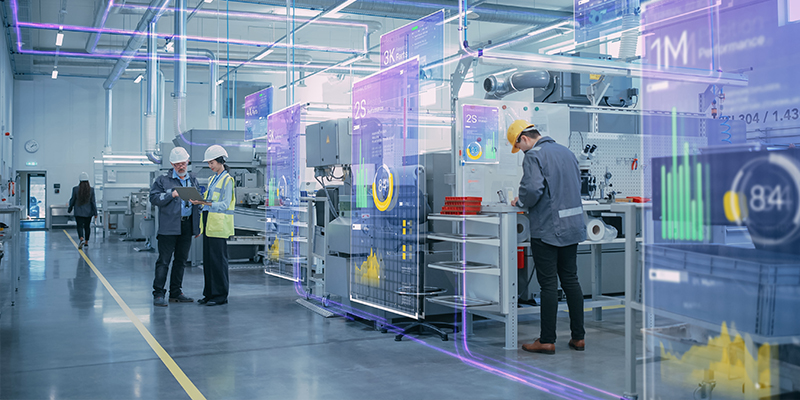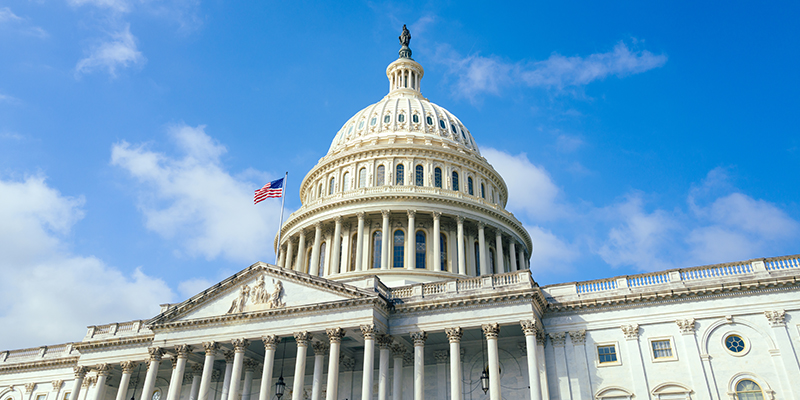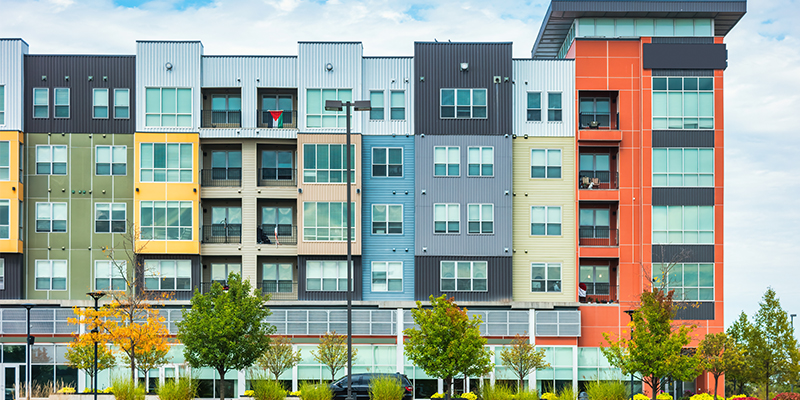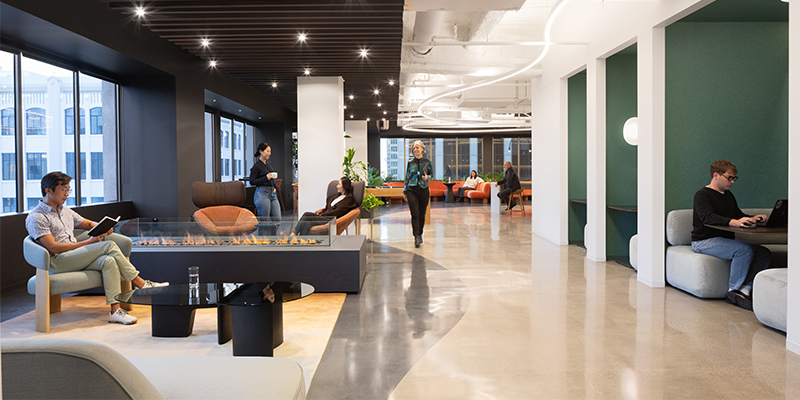Onshoring and nearshoring activity is spurring demand for manufacturing space as well as associated demand for logistics facilities, said Lisa DeNight, managing director, national industrial research, Newmark, at I.CON East this week in Jersey City, New Jersey.
DeNight and Liz Berthelette, CRE, head of northeast research and national life science research, Newmark, co-authored a report for the NAIOP Research Foundation about the impact of manufacturing’s growth in North America and shared key takeaways during their session.
“Monumental growth in manufacturing is underway and it’s an exciting time to be in industrial. There’s a big shift in where goods are manufactured versus where they are sold,” said DeNight. “This generational shift is the second great industrial disruptor in the 21st century after e-commerce.”
DeNight and Berthelette have been researching the topic for three years, surveying major manufacturing facility announcements that have been made since 2020 with a minimum investment threshold of $100 million, collecting more than 300 unique manufacturing announcements that totaled over $400 billion pledged in initial investment, supporting 210,000 new jobs, and adding a minimum of 250 million square feet of manufacturing space over the next decade.
Four main sectors are driving the growth, each critical to national security; energy and sustainability; and our future health:
- High tech/digitalization – largely semiconductors, but also satellite manufacturing, transmission tower manufacturing.
- Automotive/transportation – mostly electric vehicles, as well as autonomous forklifts and railcars.
- Energy – think solar panels and battery projects.
- Biomanufacturing – mainly pharmaceuticals.
“Companies have faced four years of unprecedented disruption after disruption,” said DeNight. The pandemic unveiled what she calls the “web of interconnected risk” as companies grapple with the fact that there are more risks than ever. This contradicts decades of offshoring manufacturing driven by the creation of the modern shipping container in the 1950s, establishment of the North American Free Trade Agreement, and China joining the Word Trade Organization in 2001.
Many companies are thinking critically about bringing manufacturing back to the U.S. or to allied partner countries. The federal government is creating incentives to make it happen, with near unprecedented levels of spending to support it, including the Infrastructure Investment and Jobs Act (November 2021), the CHIPS and Science Act (July 2022), and the Inflation Reduction Act (August 2022) that total over a half trillion dollars in tax credits and grants. States are offering mega manufacturing incentives to invest in workforces, creating shovel-ready sites and infrastructure spending in efforts to attract job-rich projects.
Investment in manufacturing facilities is coming through a variety of channels, explained DeNight as she reviewed the terms of reshoring (companies that have facilities elsewhere bringing back some of all to the U.S.), nearshoring (companies bringing supply chains or manufacturing to Mexico), domestic expansion (a U.S. manufacturer expanding here rather than overseas), and foreign direct investment (a foreign entity investing in manufacturing here to be closer to U.S. consumers).
“The U.S. is the number-one recipient of foreign investment into manufacturing,” said DeNight. “There’s a lot of interest and capital flowing into infrastructure spending […] I see spending on energy and infrastructure continuing to accelerate and we may see modern-era highs in infrastructure spending in the next decade.”
The Midwest and Southeast are seeing critical concentrations of growth, thanks to lower-cost land, wages and power, said Berthelette. For large metropolitan areas, Phoenix leads the pack with almost 16,000 jobs announced for 14 projects since 2020. Syracuse, New York, tops midsized markets, and Savannah, Georgia, is the lead for small markets.
Berthelette said existing talent is a key locational consideration, and some smaller cities have a surprisingly high concentration of advanced manufacturing employment. One example is Kokomo, Indiana, a tiny metropolitan statistical area of less than 100,000 people with a high existing inventory of manufacturing space – one of the highest shares in the country – as well as proximity to Purdue University’s talent pool and located only 100 miles from the Indianapolis’ Class A logistics market.
U.S. manufacturing construction spending has surged and is at an historic high. The South leads the nation in manufacturing construction spending of $108 billion from March 2023-March 2024. That investment is nearly equivalent to the rest of the country combined: $55.7 billion in the Midwest, $51.8 billion in the West, and $7.2 billion in the Northeast.
DeNight said that Mexico is the biggest beneficiary of this story, but its market is only about 1 billion square feet, roughly equivalent to the Dallas-Fort Worth market. Northbound traffic from Mexico into the U.S. has accelerated, and opportunities abound on the I-35 corridor that handles much of the 6 million loaded truck containers that cross the border.
Nearshoring certainly tightens transit times, said DeNight, pointing out that a load from San Luis Posti in Mexico to Chicago would take 35 hours via truck or 98 hours via rail. Moving goods from Shanghai to Chicago via ocean carrier and rail takes 456 hours.
There are currently eight Mexico-U.S. rail border crossings: two in California, one in Arizona, and five in Texas.
Berthelette says she’s very bullish on manufacturing growth continuing. U.S. manufacturing construction starts are higher now than ever, and it’s abundantly clear is that the manufacturing pipeline will continue to expand.
She identified three markets that are poised for growth based on very high quotients for advanced manufacturing employment, a significant number of operations already based there (in these cases, specifically maritime manufacturing), low power costs and access to manufacturing markets within 100 miles. The markets are Bremerton, Washington; Norwich, Connecticut; and Palm Bay, Florida.
As for what Berthelette called “Mexico’s Mexico,” Brazil and Columbia emerge as top contenders. Both are located in the Western Hemisphere and are strong manufacturers of textiles, cars, food, and cosmetics. Both have significant employment bases, and Columbia is a short three-sea-day trip to most deep ports in the U.S.
The sector isn’t without challenges, DeNight and Berthelette concluded, citing huge needs for power to supply projected growth in mega manufacturing projects and data centers.

This post is brought to you by JLL, the social media and conference blog sponsor of NAIOP’s I.CON East 2024. Learn more about JLL at www.us.jll.com or www.jll.ca.








